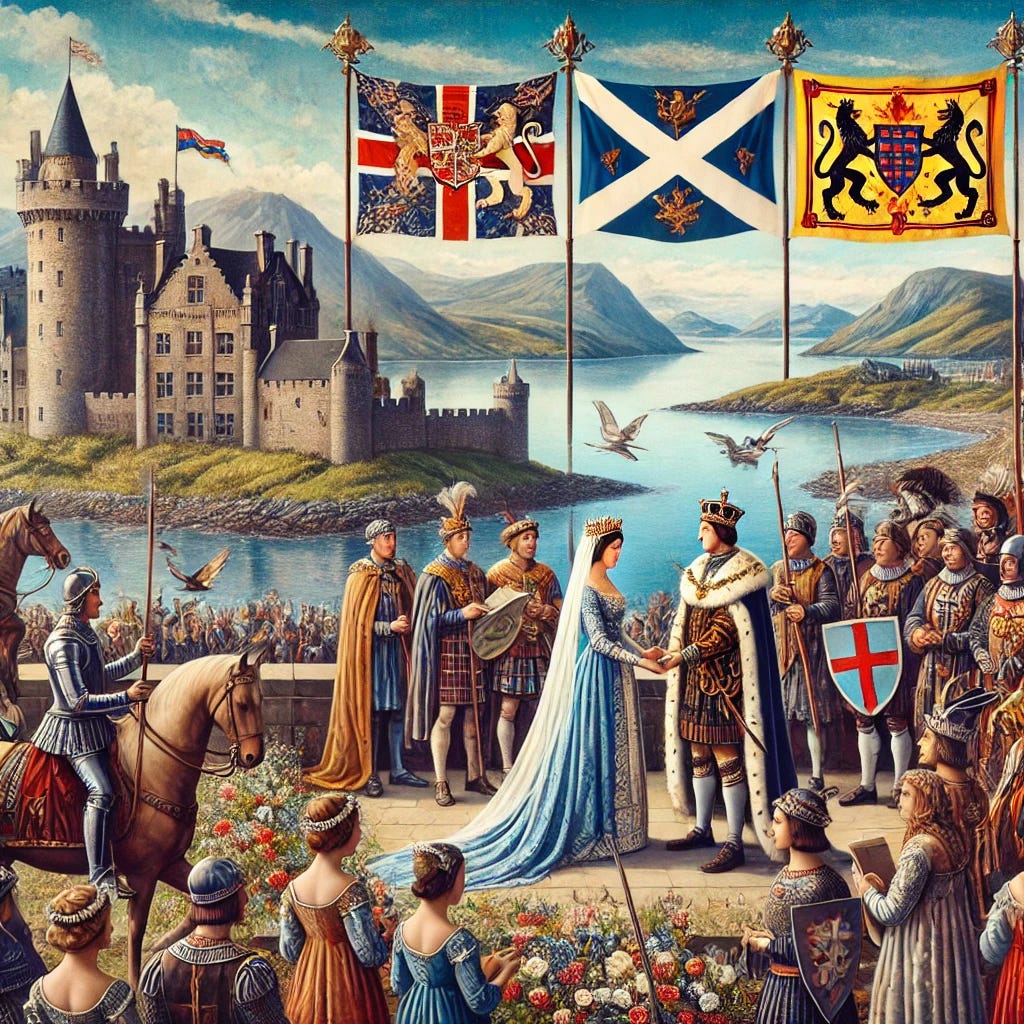How Orkney and Shetland Became Part of Scotland
The story of how the Orkney and Shetland islands transitioned from Norse control to becoming part of Scotland is a fascinating blend of politics, royal marriages, and financial maneuvering. While today these islands are firmly associated with Scotland, their history is deeply intertwined with Norway and Denmark, with centuries of Scandinavian influence leaving a lasting cultural legacy.
This blog delves into the key events that led to the islands’ annexation by Scotland, focusing on the dynastic struggles, diplomatic decisions, and economic pressures that shaped this remarkable historical transition.
The Norse Era in Orkney and Shetland
For much of the early medieval period, Orkney and Shetland were under the control of Norse rulers. These islands, strategically located between Norway and Scotland, became critical outposts of the Viking world. The Norse era began in earnest during the late 8th and early 9th centuries, as Viking expeditions swept through the British Isles.
By the 10th century, Orkney and Shetland had been incorporated into the Norwegian crown. Scandinavian earls (or jarls) governed the islands, enjoying a degree of autonomy while remaining vassals of the Norwegian kings. These earls, including legendary figures such as Sigurd the Mighty and Thorfinn the Mighty, extended their influence over parts of mainland Scotland, further embedding the islands into the Scandinavian sphere.
The islands’ importance as maritime hubs meant they thrived economically during this period. Norse law, language, and culture flourished, with many traditions persisting even after the islands’ transition to Scottish rule.
The Marriage of Margaret and James III
The process of Orkney and Shetland becoming part of Scotland began not on the battlefield but through the royal courts of Scandinavia and Scotland. The pivotal moment came in the 15th century, with the betrothal of Princess Margaret of Denmark to James III of Scotland.
Margaret was the daughter of Christian I, King of Denmark, Norway, and Sweden. The marriage was part of a broader alliance between Denmark and Scotland, with both nations seeking to bolster their influence in Northern Europe. As was customary in such unions, the bride's family was required to provide a dowry—a significant sum of money or land to accompany the marriage.
Christian I agreed to a dowry of 60,000 Rhenish florins, a substantial amount of money at the time. However, Denmark was struggling financially, burdened by debts and the costs of maintaining its vast territories. As a result, Christian was unable to pay the full dowry upfront.
The Impignoration of Orkney and Shetland
Unable to meet the dowry requirement, Christian I offered Orkney and Shetland as security for the unpaid portion of the dowry. This arrangement, known as “impignoration,” was essentially a mortgage. The islands would remain under Scottish control until the debt was repaid. The agreement was formalized in 1468 for Orkney and in 1469 for Shetland, with the islands effectively serving as collateral.
At the time, Christian likely believed that the arrangement was temporary. He anticipated that Denmark would eventually repay the dowry, reclaiming sovereignty over the islands. However, the financial pressures on the Danish crown persisted, and the debt remained unpaid.
For Scotland, this was a fortuitous turn of events. The acquisition of Orkney and Shetland strengthened its control over the northern seas and expanded its territory. Scottish rulers, keen to solidify their hold on the islands, began integrating them administratively and legally into the kingdom.
The Annexation of the Islands
In the decades following the marriage of Margaret and James III, Scotland moved decisively to make the impignoration permanent. Several acts of the Scottish Parliament formally annexed Orkney and Shetland to the crown, treating the islands as integral parts of the realm.
One key piece of legislation came in 1472, when the Archbishopric of St Andrews absorbed the Diocese of Orkney. This ecclesiastical move further integrated the islands into Scottish religious and administrative structures. Over time, Scottish law, language, and culture began to replace the Norse traditions that had dominated for centuries.
Despite these efforts, remnants of Scandinavian influence persisted. Many place names in Orkney and Shetland remain Norse in origin, and legal concepts such as udal law (a type of property ownership unique to the islands) continued to be recognized.
Did Denmark Ever Try to Reclaim the Islands?
Although the debt was never repaid, Denmark occasionally raised the possibility of reclaiming Orkney and Shetland. In the centuries following the impignoration, Danish monarchs made sporadic efforts to negotiate the return of the islands. However, these attempts were largely symbolic and lacked the political or military backing needed to challenge Scottish control.
By the time of the 1707 Act of Union, which merged Scotland and England into Great Britain, Orkney and Shetland were firmly established as Scottish territories. The question of their status faded into history, becoming more of an academic curiosity than a pressing diplomatic issue.
A Legacy of Cultural Exchange
The incorporation of Orkney and Shetland into Scotland marked the end of centuries of Norse rule, but it did not erase the islands’ Scandinavian heritage. Today, the cultural legacy of this period is evident in many aspects of life on the islands, from place names and folklore to the annual Up Helly Aa festival in Shetland, which celebrates Viking history.
This unique blend of Scottish and Norse influences makes Orkney and Shetland distinct within the United Kingdom. Their history as part of both Scandinavia and Scotland is a testament to the complex interplay of geography, politics, and culture that has shaped the northern isles.
Conclusion
The story of how Orkney and Shetland became part of Scotland is a fascinating example of diplomacy and economic necessity reshaping national boundaries. What began as a pragmatic solution to a royal dowry transformed into a permanent shift in sovereignty, altering the islands' cultural and political trajectory.
Today, Orkney and Shetland stand as symbols of the rich history that connects Scotland to its Scandinavian neighbors, their past a reminder of the enduring ties between these northern lands.





